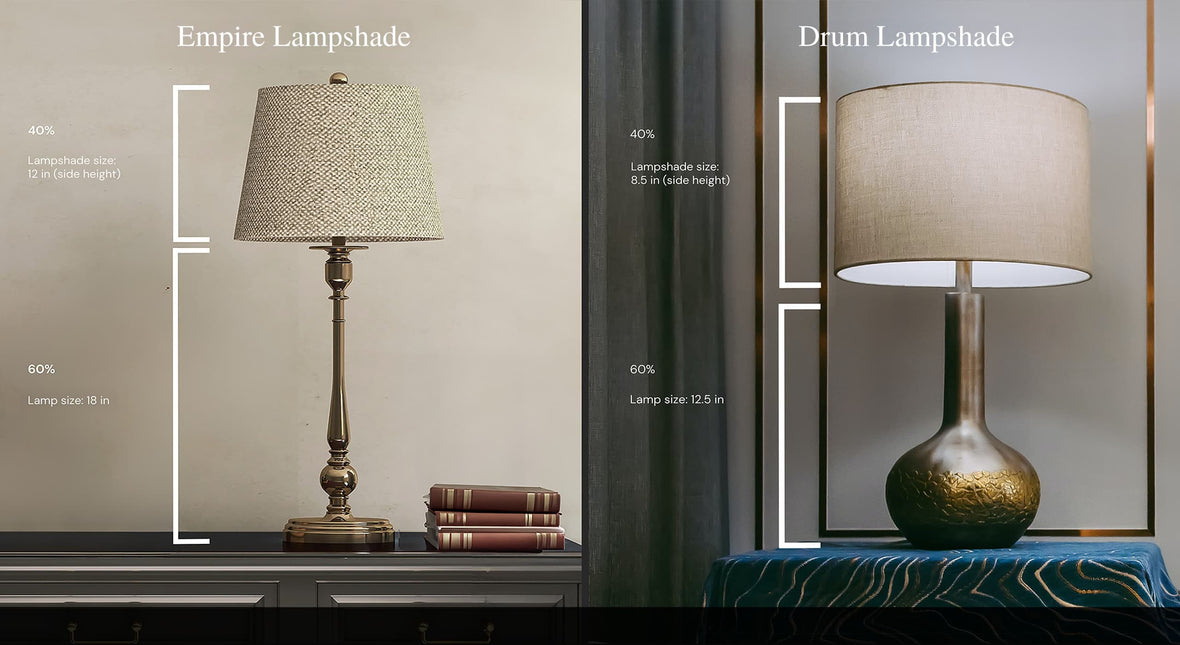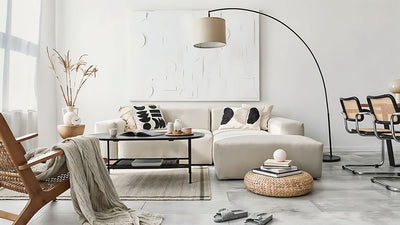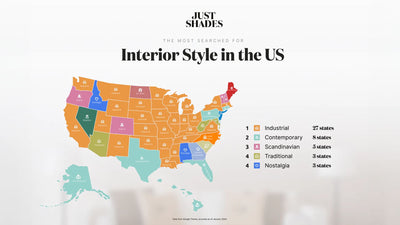How to Choose the Right Lampshade Sizes
Finding a lampshade that perfectly complements its base is sometimes easier said than done. With so much choice out there and so many different styles, colors and sizes to choose from, the options are almost endless.
However, there are a few general guidelines that can help you narrow down those choices and help you on your way to finding a lampshade that looks as though it was designed specifically with your base in mind.
In this article, we’ll explain more about what goes into making those perfect matches between the base and lampshade.
Choosing the Right Lampshade Size
The ideal size of your lampshade will, of course, depend on the size of the base you have in mind.
It’ll also be influenced by where you might be planning to position the lamp and how the room that will house your lamp has been styled.
Lampshade sizes are listed according to the diameter of the base of the shade, which is typically the widest point.
Average-sized lamp bases can usually take shades between 14” and 16”. The largest lamp bases work best with shades of a similar size, so you might consider shades of up to 20” or more if your base is on the larger side.
Guidelines for How to Measure a Lampshade
When measuring a lamp for a new shade, you'll want to consider three main dimensions: the width (diameter), height, and slant of the shade.
These dimensions ensure that the shade will not only fit the lamp base properly but also look proportional. Here’s a step-by-step guide on how to do it:
1) Measure the Base Width
Use a tape measure to measure the widest part of the lamp base. This helps determine the bottom diameter of the shade.
A general rule of thumb is for the shade to be about twice as wide as the lamp base.
2) Determine the Desired Shade Height
The height of the shade should be roughly 2/3 the height of the lamp base.
Measure from the bottom of the base to just below the socket, and then calculate 2/3 of this measurement to get an ideal shade height.
3) Measure for the Slant
If you’re choosing a tapered shade, you’ll also need to measure the slant. This is done by measuring from the top of the shade to the bottom directly across the shade.
The slant measurement helps to make sure that the shade will cover the lamp’s hardware adequately without being too tall or too short.
4) Consider the Harp Size
The harp is the metal wire that supports the lamp shade above the bulb and socket.
Make sure the shade you choose can accommodate the harp size, or be prepared to adjust the harp size to fit the shade.
5) Fitting the Shade to the Lamp Base
When selecting a shade, it’s important that it complements the base in terms of style and color. The shade should not overpower the base or vice versa.
The fitment should be snug and stable, with the shade attaching securely to the base, either resting on the socket below the bulb or attaching to the harp above the bulb.
What Size Lampshade is Best for a Table Lamp?
Table lamps tend to be amongst the smaller lamps, so if you’re shopping for a shade for your new table lamp, we’d suggest you opt for one with a diameter range of between 12 and 16 inches.
Of course, some table lamps are far bigger than others, which brings us to the next factor to consider: width.
We suggest following a ratio of 2-1 of the width of the shade to the widest part of the lamp as a starting guide. This calculation works with the vast majority of base and shade designs, but of course, the proportions and shape of the base will affect the overall look.
To get the best possible pairing, you’ll also need to think about the height of the shade in relation to the height of the base.
In our experience, a similar ratio to that mentioned above for the height of the lamp to the height of the shade never fails to create great looking matches, no matter what style you’re going for.
What Size Lampshade is Best for a Floor Lamp?
If you’re putting a floor lamp together, you can usually afford to be far more generous in terms of width and height.
Floor lamps work well with larger, more dramatic shades designed to take pride in place as a focal point in a fully styled room.
Depending on the style and shape of your base, you might want to look at shades with a diameter of around 18”, bearing in mind that you could push this to 20” or more if the lamp is destined for a more spacious room.
Floor lamps often work well with contemporary shapes, such as drum shades, but empire shades are equally impressive on floor lamps if your style is more traditional.

Matching the Shade Size With the Room
The right lamp will really set off a room, but choosing a lampshade and base capable of making a room sing takes thoughtful consideration.
To get the best results, shop for your lampshade and base with a particular room in mind. That way, you’ll be able to choose the best size shade for your room, and you’ll ensure that the style fits with the existing decor too.
Grand, spacious rooms lend themselves to larger, more dramatic shades. So, if your room is vast and you’ve got plenty of space to fill, you’ll need to be bold and choose a base and shade that demands attention.
In smaller, cozier rooms, that space will be at a premium. Small rooms, therefore, tend to be better suited to more delicate lamps, with shades that blend in with the existing decor.
Some shapes, such as smaller oval shades, can maximize space with clever lighting tricks that make a room feel bigger than it is.However, the same shades could seem dwarfed in larger spaces.

Get Advice on Choosing the Right Lampshade Size
There are no set rules you must abide by when choosing a lampshade, but our design team’s tips will help you find a shade that complements its base and intended surroundings.
If you’d like to find out more about how to choose the perfect lampshade for your room, don’t hesitate to contact us.
We’re on hand to offer you all the advice and guidance you need to help you find a shade that gives your room the wow factor.








